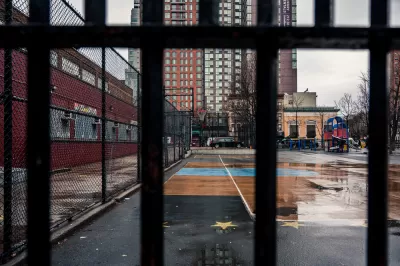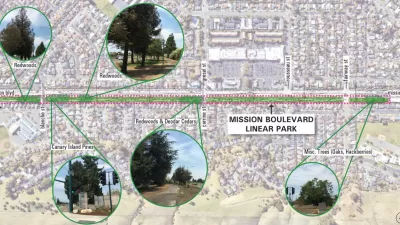Transforming asphalt schoolyards into green spaces with porous surfaces can improve the well-being of students and neighbors and contribute to more effective stormwater management in urban areas.

Schoolyards could be the next frontier for green infrastructure in urban areas, according to an article by Marianne Dhenin in Next City.
In dense urban areas such as New York City, building a new park can be an expensive undertaking. But redesigning existing schoolyards to be more green and ‘spongy’ can help with stormwater drainage, improve air quality, and bring green spaces to park-poor neighborhoods, closing the equity gap that leaves 100 million Americans with little or no access to nearby parks. “According to TPL, in 2022, at least 73 of the nation’s 100 largest cities opened schoolyards after hours to the general public, up from just 44 cities in 2018.”
The benefits of greener schoolyards extend to students, too. “Studies have linked vegetation in schoolyards to better school-wide academic performance, even after controlling for significant confounding factors like student poverty and minority status.”
Organizations including the Trust for Public Land (TPL) are working with schools around the country to develop their own schoolyard greening projects, and a bill introduced in the Senate last year would direct federal funding to the cause.
More on green schoolyards:
FULL STORY: Greener School Playgrounds Are An Overlooked Climate Solution

Alabama: Trump Terminates Settlements for Black Communities Harmed By Raw Sewage
Trump deemed the landmark civil rights agreement “illegal DEI and environmental justice policy.”

Planetizen Federal Action Tracker
A weekly monitor of how Trump’s orders and actions are impacting planners and planning in America.

The 120 Year Old Tiny Home Villages That Sheltered San Francisco’s Earthquake Refugees
More than a century ago, San Francisco mobilized to house thousands of residents displaced by the 1906 earthquake. Could their strategy offer a model for the present?

In Both Crashes and Crime, Public Transportation is Far Safer than Driving
Contrary to popular assumptions, public transportation has far lower crash and crime rates than automobile travel. For safer communities, improve and encourage transit travel.

Report: Zoning Reforms Should Complement Nashville’s Ambitious Transit Plan
Without reform, restrictive zoning codes will limit the impact of the city’s planned transit expansion and could exclude some of the residents who depend on transit the most.

Judge Orders Release of Frozen IRA, IIJA Funding
The decision is a victory for environmental groups who charged that freezing funds for critical infrastructure and disaster response programs caused “real and irreparable harm” to communities.
Urban Design for Planners 1: Software Tools
This six-course series explores essential urban design concepts using open source software and equips planners with the tools they need to participate fully in the urban design process.
Planning for Universal Design
Learn the tools for implementing Universal Design in planning regulations.
Clanton & Associates, Inc.
Jessamine County Fiscal Court
Institute for Housing and Urban Development Studies (IHS)
City of Grandview
Harvard GSD Executive Education
Toledo-Lucas County Plan Commissions
Salt Lake City
NYU Wagner Graduate School of Public Service





























